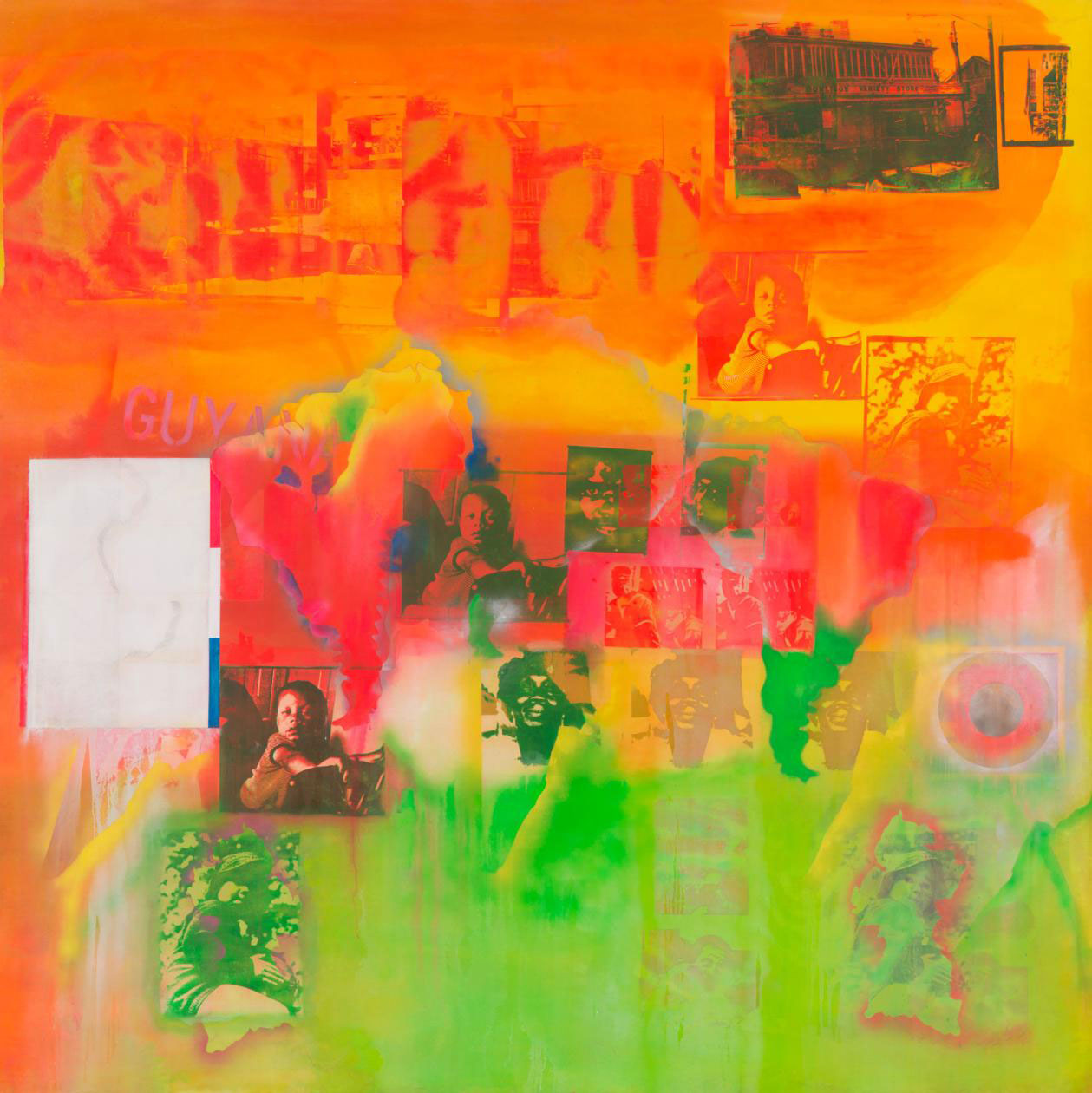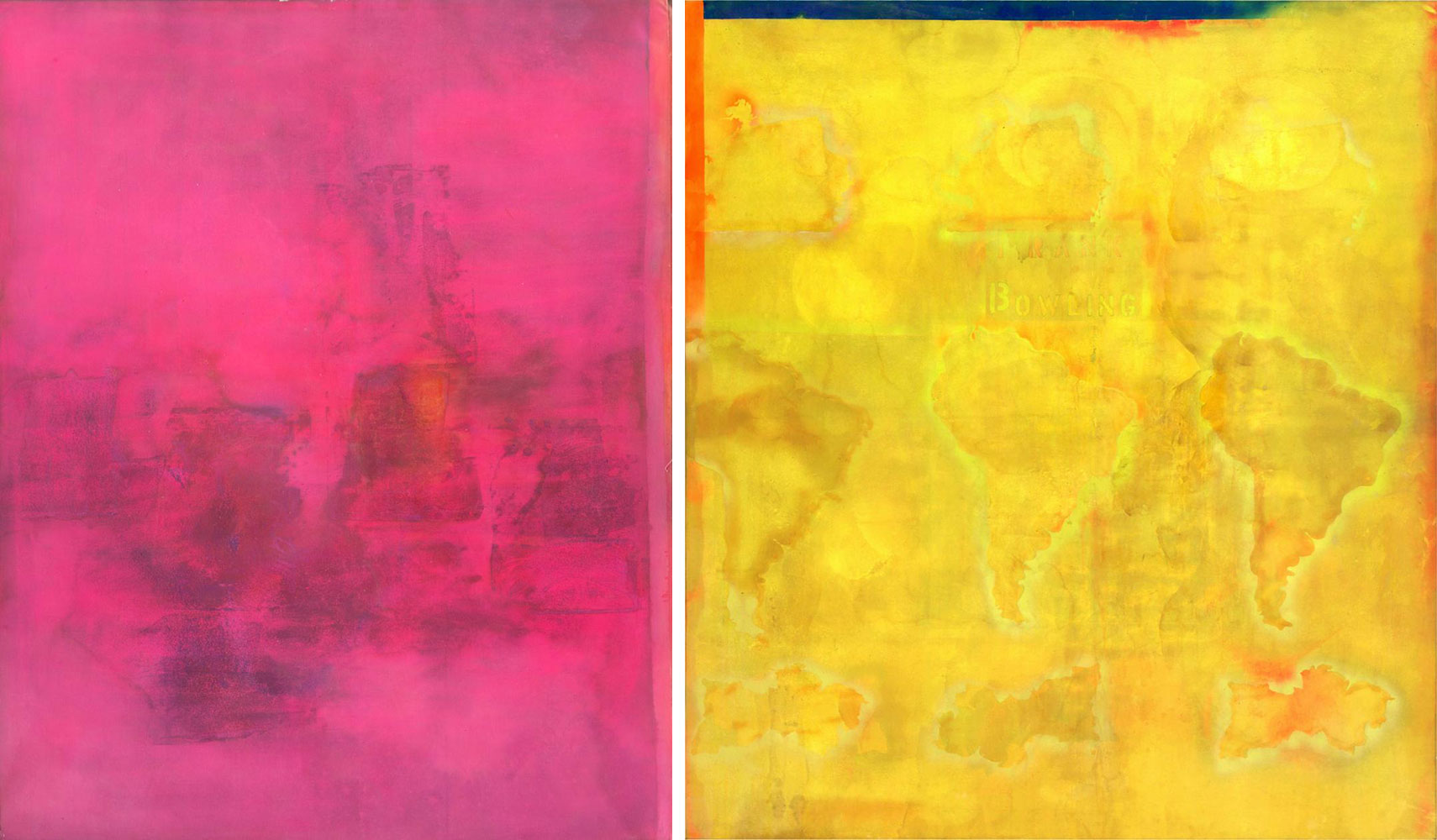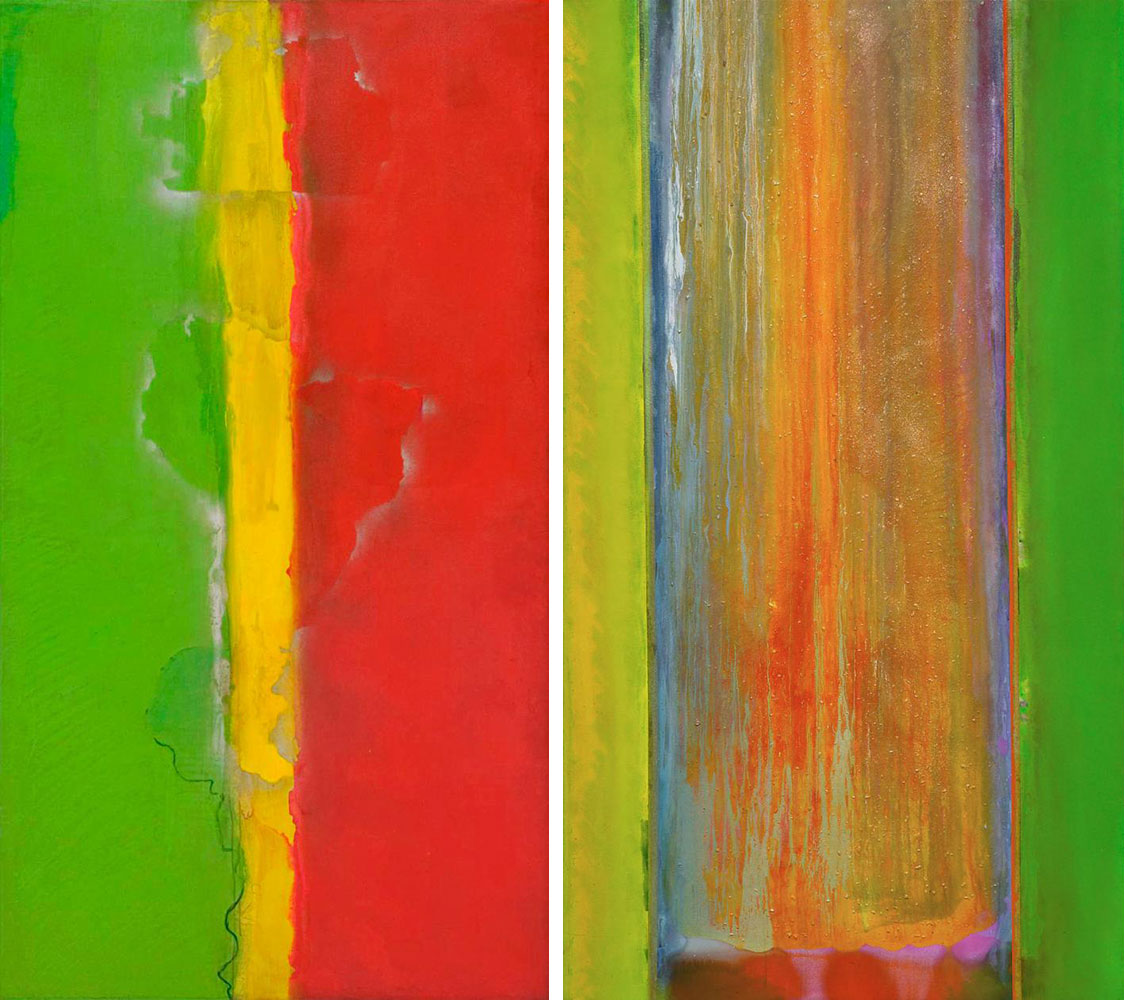PRESENTATION: Frank Bowling’s Americas
 Over the course of six decades, Frank Bowling has relentlessly pursued a practice which boldly expands the possibilities and properties of paint. Ambitious in scale and scope, his dynamic engagement with the materiality of his chosen medium, and its evolution in the broad sweep of art history, has resulted in paintings of unparalleled originality and power. Bowling has been hailed as one of the foremost British artists of his generation.
Over the course of six decades, Frank Bowling has relentlessly pursued a practice which boldly expands the possibilities and properties of paint. Ambitious in scale and scope, his dynamic engagement with the materiality of his chosen medium, and its evolution in the broad sweep of art history, has resulted in paintings of unparalleled originality and power. Bowling has been hailed as one of the foremost British artists of his generation.
By Dimitris Lempesis
Photo: MFA Boston Archive
The exhibition “Frank Bowling’s Americas” brings together a range of Bowling’s powerful works created in UDA. Pop-inflected paintings from the early 1960s; monumental, color-soaked canvases that evoke oceanic expanses; and little-seen examples of the artist’s technically pioneering paintings rooted in abstraction. Providing for the first time a nuanced encounter with this pivotal chapter of Bowling’s career, “Frank Bowling’s Americas” offers an essential contribution to a more cross-cultural and global understanding of modern art. Bowling first visited New York City in 1961 and quickly made a habit of returning. Having decided to relocate there from London in 1966, he quickly immersed himself in an art scene centered on abstract expressionism and pop, beginning a dynamic dialogue with the painting he found there and imbuing his works with personal meaning and historical awareness. Working prolifically, he also engaged widely in sociopolitical issues: exhibiting, teaching, writing and contributing to surging debates over Black cultural identity and artistic practice. Honing a firm disregard for limits on his art, he forged new routes into abstraction and a commitment to continued renewal of painting that has continued to inform his work ever since. Exploring this transformative period in Bowling’s career, Frank Bowling’s Americas shows a view of modern art that exceeds narrow boundaries, shaped across continents and over oceans. The exhibition is organized chronologically, beginning with works that anticipate Bowling’s move to the U.S. and his first years spent there. Works created in New York such as “Palimpsest I – Mothers House DarkRedGreen” (1966) are a departure from the figurative paintings he made while studying in London and reflect his movement toward a more abstract visual language that would increasingly become his focus. In his first months after arriving in New York, Bowling began working with a map motif. At first, he painted land masses onto canvas by hand, but shortly switched to a more mechanical method by spray-painting over stencils made from readily available wall maps and atlases. Working with his canvas laid out on the floor, Bowling brought these spectral map shapes into conversation with fields of stained, splashed, drizzled and poured acrylic paint that take on oceanic qualities beside the land masses. Through 1971, Bowling used this evocative combination in a range of ways, culminating in epically proportioned canvases such as “Night Journey” (1969–70) and “Penumbra” (1970), whose surfaces claim for themselves the vast sweep of world maps. Between 1969 and 1971, Bowling’s paintings shifted fully into abstraction. The expressive force of color was something he had explored for several years, but typically in combination with recognizable images drawn from his personal repertoire, as seen in the painting “Mother’s House and Night Storm” (1967). During this transition, Bowling laid siege to these personal images such as “Doughlah G.E.P.’ (1968–71) and Bowling’s participation, since late 1968, in debates around the work Black visual artists should make during an especially charged moment in the Black struggle for freedom. Throughout his engagement, Bowling rejected the depiction of explicitly political content, forging instead a path into emphatic abstraction. Bowling’s arrival in the U.S. during the summer of 1966 intersected with the rise of the Black Power movement. Rallying cries for African American pride, together with economic, political and cultural empowerment, galvanized discussion in creative communities, which Bowling participated in vocally. A section of the exhibition featuring archival materials and Bowling’s own writing outlines his wide-ranging engagements with debates around the shape and definition of Black artistic practice, issues that continue today.The exhibition’s later works include Bowling’s monumental canvases divided into bands of subtly contrasting color. This series as a whole—including “Who’s Afraid of Barney Newman” (1968) and “Looking at Barney & Mark” (1972), which reference Barnett Newman and Mark Rothko signals a definitive departure from a painting practice rooted in figuration. In the following years, Bowling began searching for ways to further challenge himself, experimenting with a new working method that involved pouring specially prepared, thinned acrylic paint down lengths of canvas. In these works, such as “Suncrush” (1976) Bowling made the act of pouring the basis of the whole composition. The exhibition ends with two recent works: “4 Bensusi” and “Looking West Again” (both 2020), these vibrant and poignant paintings demonstrate how Bowling, now in his 80s, revisits, alters and combines his historical painterly techniques while broaching new conceptual terrain. Bowling returned to London in 1975 but continued to spend significant periods in New York. His sculptural paintings of the 1980s include embedded objects and thickly textured canvases, and have been described as evoking landscape, riverbeds and geologic strata. Visible in his work, are legacies of both the English landscape tradition and American abstraction. Bowling shares Turner and Constable’s preoccupation with light, never more evident than in his dazzling ‘Great Thames’ paintings of the late 1980s. Bowling’s experiments with ammonia, gel, metallic and pearlescent paint create incandescent reactions on the canvas. His recent work encompasses collage, poured paint, stencilling, staining, and stitching canvases, bringing together techniques honed over a lifetime of painting. Bowling became a Royal Academician in 2005 and was awarded the OBE for services to Art in 2008 and a knighthood in the Queen’s Birthday Honours in 2020.
Photo: Frank Bowling, Middle Passage (detail), 1970. Synthetic polymer paint, silkscreen ink, spray paint, wax crayon, and graphite on canvas. Menil Collection, Houston. Photograph by Adam Neese. © Frank Bowling. All rights reserved, DACS, London & ARS, New York 2022
Info: MFa Boston, 465 Huntington Avenue, Boston, MA, USA, Duration: 22/10/2022-9/4/2023, Days & Hours: Mon, Wed & Sat-Sun 10:00-17:00, Thu 10:00-22:00, www.mfa.org/

Right: Frank Bowling, Mel Edwards Decides, 1969, Acrylic and spray paint on canvas. Private Collection, courtesy of Adam Green Art Advisory. Image: Green Family Art Foundation. © Frank Bowling. All rights reserved, DACS, London & ARS, New York 2022


Right: Frank Bowling, Suncrush, 1976, Acrylic on canvas. Sophie M. Friedman Fund. Photograph © Museum of Fine Arts, Boston. © Frank Bowling. All rights reserved, DACS, London & ARS, New York 2022

Frank Bowling, Penumbra, 1970, Acrylic and spray paint on canvas. Fine Arts Museum of San Francisco. Foundation purchase, Phyllis C. Wattis Fund for Major Accessions. Image: © Hales Gallery. © Frank Bowling. All rights reserved, DACS/Artimage, London & ARS, New York 2022

Right: Frank Bowling, Looking West Again, 2020, Acrylic on canvas. Lent by the Metropolitan Museum of Art, Purchase, Museum Acquisitions and Florence and Herbert Irving Acquisitions Funds, Gina and Stuart Peterson and The Ford Foundation Gifts, and Rogers Fund, 2022. Image: Damian Griffiths. © Frank Bowling. All rights reserved, DACS/Artimage, London & ARS, New York 2022


Right: Frank Bowling, Woosh, 1974, Acrylic on canvas. Private Collection, USA. Image by Jaime Alvarez. Reproduced with permission. © Frank Bowling. All rights reserved, DACS, London & ARS, New York 2022
